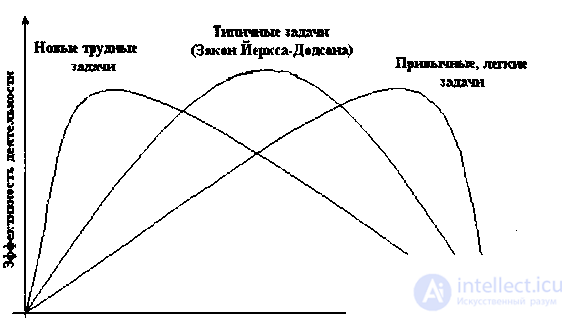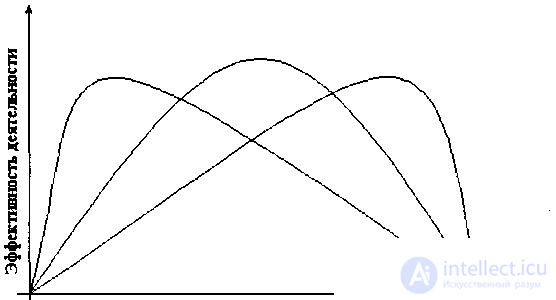Lecture
The affective factors of economic behavior include emotions, feelings, experiences.
Emotions are a psychophysiological process, an integral reaction of the organism, reflecting the attitude of the subject to the object (other subject) in a situation of uncertainty. Emotions paint and thus consolidate individual experience in the economic sphere, affecting economic behavior. Thanks to emotional memory, useful behaviors are fixed, and unsuccessful ones are rejected.
Emotion modality
Positive emotions, good mood stimulate greater consumer activity, therefore, various factors are used (visual, auditory, olfactory, etc.) that elevate mood in stores, supermarkets, and places of entertainment. Positive emotions reinforce optimistic expectations that increase unplanned expenses and reduce the consumer's desire to save. The effect of negative emotions is the opposite. The same laws work for exchange-traded players: against the background of positive emotions, they have more hope in relation to the product, its operation or the situation on the exchange, which stimulates a greater risk.
Intensity of emotions
Thanks to emotions, energy reserve opportunities are activated in a situation of uncertainty. However, for different situations, activities, a different level of activation is required.

Activation level
Figure 3. The manifestation of the law of Yerkes-Dodson in a complex and simple activity.
According to the law of Yerkes-Dodson, there is an optimal level of arousal, desire, emotional and motivational support of activity. As can be seen from fig. 3, the relationship between success and intensity of desire is non-linear, it has the form of an U-shaped inverted curve. If the level of excitement is too high from the desire, the cognitive components of the activity are destroyed, the target is shifted to the result (energy goes to presenting the result, not to get it to fear).
The factor of complexity of the task, responsibility of the activity makes its own adjustments to the model of activity of economic behavior. It turned out that with simple tasks a high level of arousal should be maintained to avoid lethargy. Difficult tasks require a low level of arousal, and medium-sized ones require an average level of activation and stress. Figure 3 shows three curves: the U-shaped inverted curve and its modifications for simple and complex problems 9 .
In a state of heightened arousal, people are more likely to engage in easier activities (putting order in the papers), and in a state of low arousal, they will be more complex (filling out income declarations, drawing up a production or accounting report).
If, in a situation of increased responsibility in labor and educational activities, overexcitement, re-motivation worsens the result of work, then stress and anxiety in such situations will be a managerial mistake. Such mistakes are sometimes made by superiors, teachers, parents.
The Yerkes-Dodson law is also manifested in consumer behavior. The more important the purchase, the more attractive the product is (the increased level of arousal), the more likely it is to make mistakes in the situation of information overload (difficulty of choice). Information overload can be triggered by a variety of goods and services, the need to take into account many factors of choice (price, reliability, prestige, novelty, etc.), controversial sources of information about the product, lack of choice time.
Content of emotions
It affects the economic behavior in general and personal emotional profile, namely the content, the nature of the prevailing emotions and feelings, those higher emotions that are particularly desirable to a particular person.
Let's start with those that are more tinged economic behavior.
Exciting emotions (from French acquisition - acquisition) are emotions that color the process of acquiring, collecting, procurement, etc. They are closely related to the areas of consumption and accumulation. Saturation of accumulation needs gives a person a feeling of material freedom and security from a rainy day. When it crosses the border, a man turns into a miserly knight. A characteristic manifestation of the over-expression of excitement of emotions is the excessive desire to make stocks, which then spoil, are thrown out, being unclaimed.
The following four senses color the field of activity.
Praxical emotions and feelings arise when there is a desire to achieve success in work, when captured by a deed, you experience fatigue with a sense of satisfaction and you admire the result. Workaholics have a low saturation of labor needs.
Gnostic (from the Greek. Gnosis - knowledge) emotions are associated with the desire to penetrate the essence of the phenomenon, the joy of discovering the truth, the desire to overcome contradictions, put everything on the shelves.
Gloric (from the Latin. Gloria - fame) emotions are associated with the desire for self-affirmation, recognition and honor. They push the person to self-improvement, self-development. They are inextricably linked feeling wounded vanity, the desire to take revenge. The extreme manifestation of gloric emotions is manifested in the form of an irrepressible thirst for glory, awards, honors, which is associated with a violation of moral prohibitions.
Pugunic (from the Latin. Pugna - struggle) emotions are based on the need for struggle, the desire to overcome danger, to experience excitement, risk. They are accompanied by a sense of emotional and volitional tension, the ultimate mobilization of their physical and mental abilities. If they overwhelm a person, he loses his head.
Altruistic (connected with exchange and distribution) is a disinterested desire to bring joy and happiness to others, anxiety and concern from someone, empathy, tenderness, devotion. Extreme danger of burnout to heartlessness. There is also altruism with a minus sign, when a person is waiting for the misfortunes of others to demonstrate their talents.
The classification also includes aesthetic, hedonistic, communicative and romantic experiences. Aesthetic emotions serve the need for beauty, enjoyment of beauty, harmony. They provide the joy of life, the usefulness of life, but are not recognized by everyone as a value.
Hedonistic emotions express the need for physical and mental comfort. They bring pleasure from tasty food, sun, warmth, pleasant atmosphere and others. The desire to experience hedonistic emotions depends on the desire to work and acquire. Able to rest well, the body will repay health and better work. But if hedonism becomes the meaning of life, boredom, satiety and persistent fatigue quickly ensue.
Communicative emotions and feelings - the desire to communicate, share their thoughts and experiences, to find their response. These emotions often take the first place among women, and among men - the third.
Romantic emotions are an expectation of an extraordinary miracle, an alluring feeling given, a desire for the unknown and the mysterious. This attraction is sinister, magical. They stimulate the creation of a new, the discovery of the unknown, but with too much delay in the world of fairy tales there is a danger of escaping the real world altogether.
The emotional profile of an individual and a group obtained with the help of this questionnaire can be used in solving marketing problems. Thus, advertising should be based on the emotions preferred by the group to which it is addressed. Knowledge of the dominant higher emotions of a collective or group is also advisable to apply in order to effectively manage them.
Emotion or rational calculation plays a leading role in the purchase? It depends on the nature of the goods and services and on the identity of the buyer.
The more expressive a product (causes strong bright emotions, “infects”, attracts), the more the cognitive components of the evaluation and selection of the product are suppressed, i.e. the choice becomes less thoughtful. The expressiveness of the product is more likely associated with prestige, expressiveness, "fashion", sensual attractiveness, than with its functional and utilitarian appointments. For example, the expressiveness of clothing serves its psychosocial goals, while its protective properties are functional.
Emotional choice is characterized by internal integrity and indivisibility, self-focusing and inexplicability. An expressive product gives rise to emotional judgments that are closely related to the image of the “I” and are poorly renounced. “This is mine”, “I like it”, “this is not for me”, “that’s what suits me” - examples of personal emotional judgments unlike cognitive “this thing is cheap and well made”, “there’s a lot of space in the car”, “natural tissues are healthier. "
Often the emotional choice becomes the leader in the selection of several alternatives (directs and holds attention). It distinguishes something from the surrounding and creates the first impression of an emotional choice, and at the final choice an informational search and rational calculation are carried out. The higher the interest in the result, the more important the choice, the sooner thinking will dominate the emotions.
Test questions:
1. Explain on a specific example of activity how the parameters are related: the difficulty of the task (activity) and the level of arousal (expressiveness of emotions, degree of significance and desirability of the result).
2. Mark the curves in Fig.4.

Activation level
Fig. 4. The manifestation of the law of Yerkes-Dodson in a complex and simple activity (without the designation of curves).
3. Recall the types of emotions according to B.I. Dodonov. Referring to what kind of emotion is currently abusing advertising?
Comments
To leave a comment
Economic psychology
Terms: Economic psychology